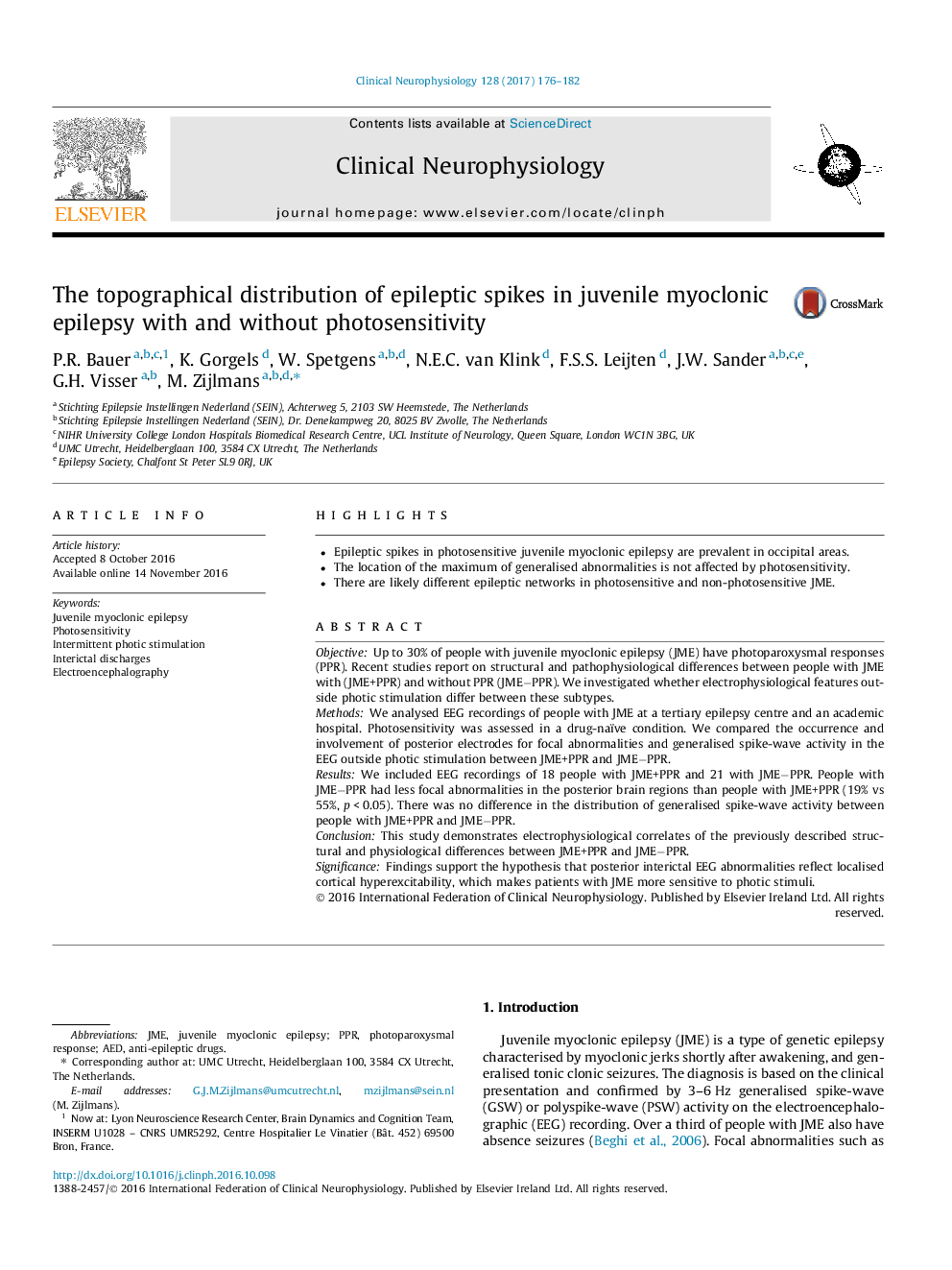| Article ID | Journal | Published Year | Pages | File Type |
|---|---|---|---|---|
| 5627438 | Clinical Neurophysiology | 2017 | 7 Pages |
â¢Epileptic spikes in photosensitive juvenile myoclonic epilepsy are prevalent in occipital areas.â¢The location of the maximum of generalised abnormalities is not affected by photosensitivity.â¢There are likely different epileptic networks in photosensitive and non-photosensitive JME.
ObjectiveUp to 30% of people with juvenile myoclonic epilepsy (JME) have photoparoxysmal responses (PPR). Recent studies report on structural and pathophysiological differences between people with JME with (JME+PPR) and without PPR (JMEâPPR). We investigated whether electrophysiological features outside photic stimulation differ between these subtypes.MethodsWe analysed EEG recordings of people with JME at a tertiary epilepsy centre and an academic hospital. Photosensitivity was assessed in a drug-naïve condition. We compared the occurrence and involvement of posterior electrodes for focal abnormalities and generalised spike-wave activity in the EEG outside photic stimulation between JME+PPR and JMEâPPR.ResultsWe included EEG recordings of 18 people with JME+PPR and 21 with JMEâPPR. People with JMEâPPR had less focal abnormalities in the posterior brain regions than people with JME+PPR (19% vs 55%, p < 0.05). There was no difference in the distribution of generalised spike-wave activity between people with JME+PPR and JMEâPPR.ConclusionThis study demonstrates electrophysiological correlates of the previously described structural and physiological differences between JME+PPR and JMEâPPR.SignificanceFindings support the hypothesis that posterior interictal EEG abnormalities reflect localised cortical hyperexcitability, which makes patients with JME more sensitive to photic stimuli.
